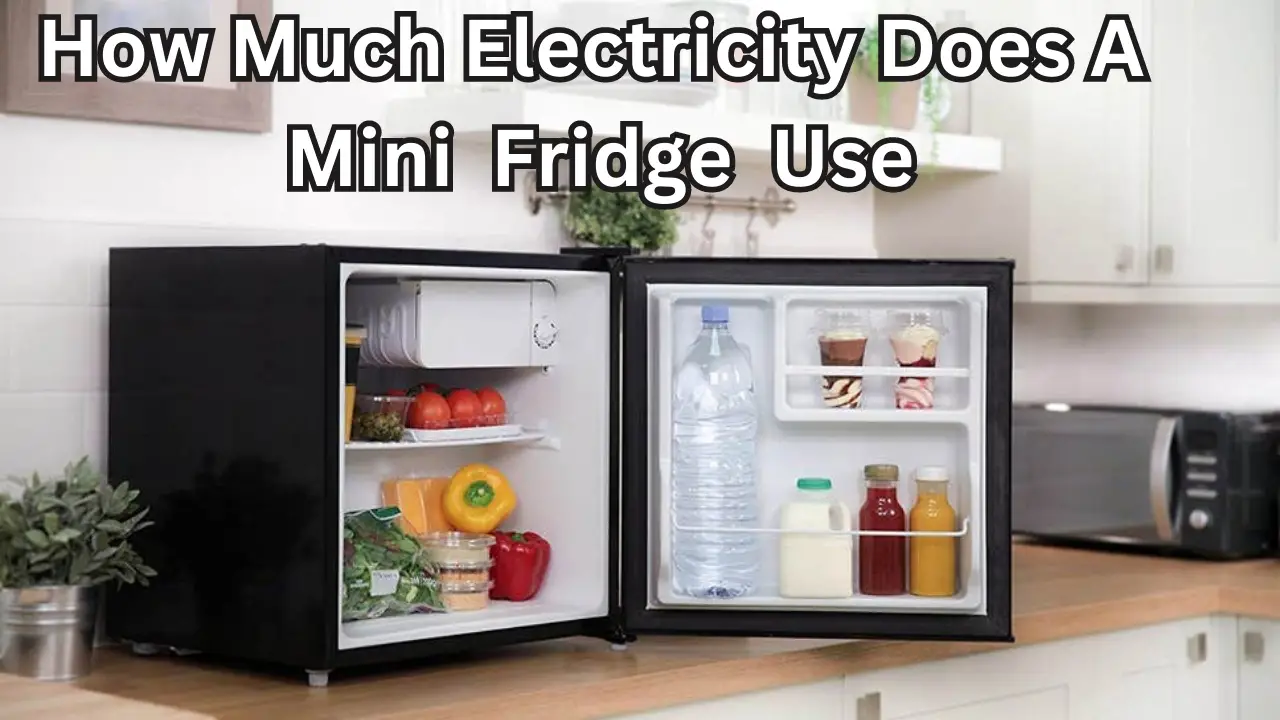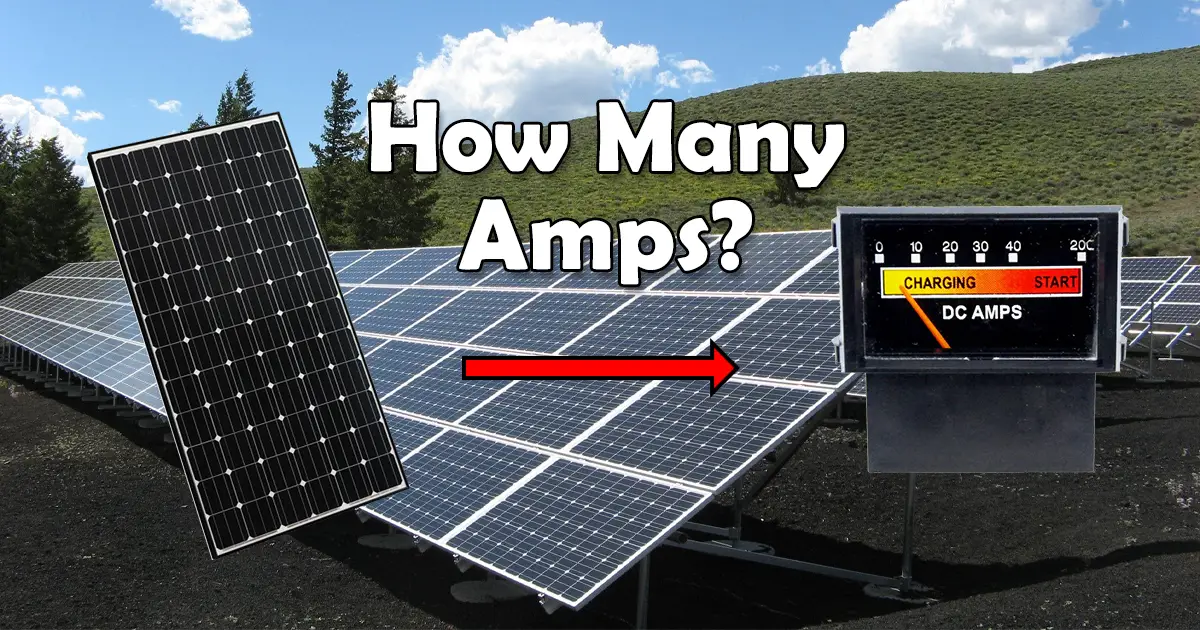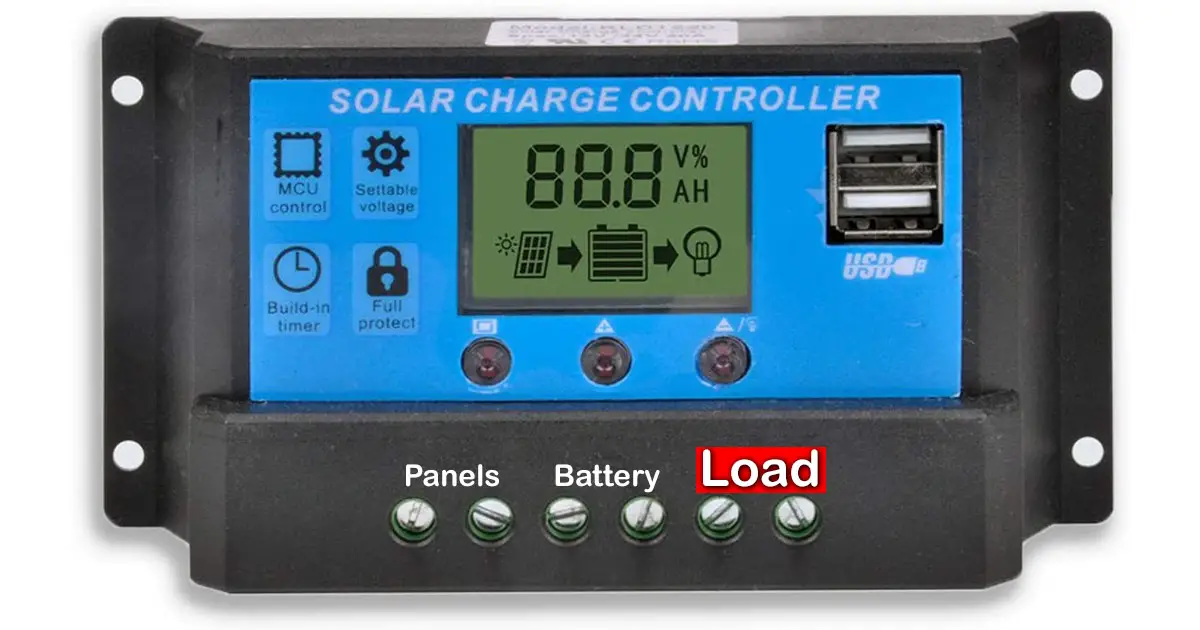The convenience and space-saving qualities of mini refrigerators have contributed to their meteoric rise in popularity. They are commonly used in dorm rooms, offices, hotel rooms, and even as supplementary refrigeration units in homes. While their small size may suggest lower energy consumption, it is important to understand the actual electricity usage of these appliances.
In this article, we will delve into the details and explore how much electricity a mini fridge typically consumes.
Mini fridges’ electricity consumption can vary depending on factors such as size, efficiency, and usage habits. A mini refrigerator typically consumes 15 to 25 kWh per month, or 0.55 to 0.85 kWh per day. The annual energy consumption of a mini fridge is usually around 200 to 300 kWh.
Understanding Mini Fridges
Let us begin by understanding the two main factors that contribute to the electricity usage of a mini fridge: Power usage – measured in Watts, and Energy consumption – measured in Watt-hours or kilowatt-hours.
By making yourself familiar with these measurements, you will get a better understanding of the amount of energy your mini fridge consumes.
To provide practical examples, we will then offer approximations of the Energy usage for different mini fridge models currently available in the market. Furthermore, we will present several methods to determine your specific mini fridge’s energy consumption accurately.
To provide further perspective, we will compare the typical energy usage of mini fridges to that of larger refrigerators and other appliances in your household.
Lastly, we will delve into the financial aspect and examine the cost of operating a mini fridge. Now, let’s delve into the details and uncover the electricity consumption of your mini fridge.
How much electricity does a mini fridge use?
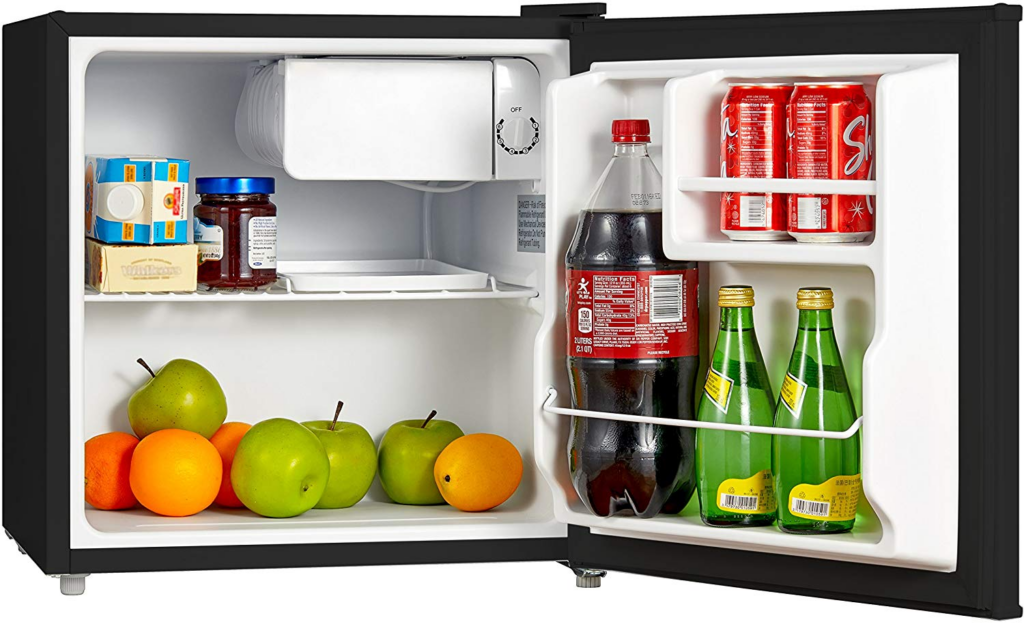
It’s critical to distinguish between two major factors of electrical usage when calculating the power consumption of a mini fridge, or any appliance for that matter:
Power Usage: This describes how much electricity the mini-fridge uses. For instance, a compact fridge may use about 70 Watts of power when its compressor is operating.
Energy Consumption: This gauges how much electricity the small fridge actually uses over a predetermined time. For instance, a mini refrigerator would be estimated to require 800 Watt-hours or 0.8 Kilowatt-hours of energy daily.
Note that it’s crucial to comprehend the distinction between energy consumption and power usage; the two metrics shouldn’t be compared.
Energy Consumption = Power Usage x Usage Duration
For example, a typical mini fridge consumes approximately 75 watts of power while running and generally operates for 8 to 10 hours per day. This power usage and daily duration add up to a daily energy consumption of about 600 to 750 watt-hours.
Understanding the power usage of your mini fridge is crucial when determining the suitable equipment to power it, such as inverters or generators.
However, the energy consumption of the mini fridge holds even greater significance. It not only helps in sizing equipment like solar panels or batteries but also serves as the metric used by utility companies to measure your electricity usage for calculating monthly charges.
Factors Affecting Energy Consumption
Several factors contribute to the energy consumption of a mini fridge. Understanding these factors can help users make informed decisions regarding their usage:

Size and Capacity: The size and capacity of a mini fridge play a significant role in its energy usage. Generally, larger models consume more electricity because they require a larger compressor to maintain the desired temperature.
Insulation: The quality and thickness of insulation in a mini fridge affect its energy efficiency. Well-insulated units are better at retaining cold air, reducing the workload on the compressor and, consequently, minimizing energy consumption.
Thermostat Settings: The temperature at which a mini fridge is set also impacts its energy usage. Lowering the thermostat excessively can lead to higher energy consumption, while setting it too high may compromise food safety. Maintaining the recommended temperature range is crucial for balancing energy efficiency and proper food storage.
Frequency of Door Openings: Every time the mini fridge door is opened, warm air enters, and the compressor has to work harder to bring the temperature back down. Frequent door openings can significantly increase energy consumption. It is advisable to retrieve multiple items at once or plan ahead to minimize door openings.
Placement and Ventilation: The location and ventilation around the mini fridge affect its energy efficiency. Placing the unit away from direct sunlight, heat sources, and tight spaces allows for better airflow, reducing the energy required to maintain the desired temperature.
What is the power consumption of a mini fridge in terms of watts?
A mini fridge’s power consumption can change depending on the model and size. A mini refrigerator usually uses between 60 and 120 Watts of power continually while it is operating. But it’s vital to remember that the mini fridge can see a brief increase in power consumption starting from 300 to 600 Watts.
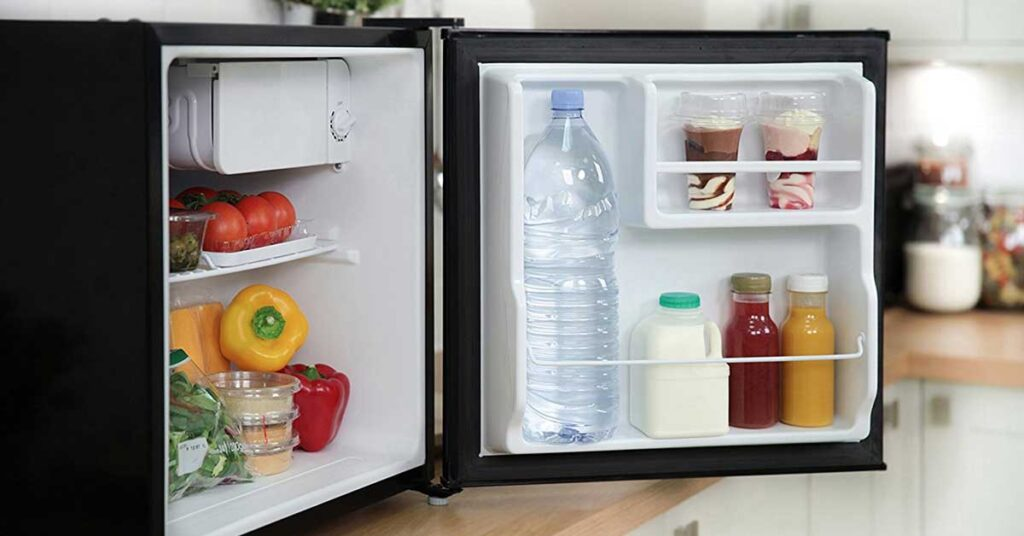
Older mini-fridges often have lower efficiency ratings than more recent versions, which could result in increased power needs.
It is advised to consult the electrical specifications label or accompanying paperwork for precise information regarding the power consumption of your particular small fridge. The following two electrical needs deserve your attention:
- Rated Voltage: Rated voltage refers to the voltage at which an electrical device or system is designed to operate safely and effectively. (shown here by the abbreviation “V” or “volts”).
- Rated Current: This specification describes the current draw of the mini refrigerator in terms of Amperage (in Amps, or “A” for short).
These two electrical requirements are essential for figuring out how much electricity your mini fridge uses. The formula below can be used to determine the power usage once you have these values:
Rated Power = Rated Voltage x Rated Current
Example
Suppose your mini fridge has a rated voltage of 120 Volts and a rated current of 0.8 Amps. By applying the formula mentioned above:
Rated Power = Rated Voltage x Rated Current
Rated Power = 120 Volts x 0.8 Amps
Rated Power = 96 Watts
Therefore, the power consumption of your mini fridge would be approximately 96 Watts.
Additionally, the manufacturer specifies a start-up amperage of 4 Amps.
The start-up power required by the mini fridge can be calculated as follows:
Start-up Power = Rated Voltage (Volts) x Start-up Current (Amps)
Start-up Power = 120 Volts x 4 Amps
Start-up Power = 480 Watts
Based on this calculation, the mini fridge requires a start-up power of 480 Watts. This start-up power is important to consider when selecting appropriate equipment.
For instance, if you wish to choose an inverter that can power the mini fridge, the inverter should have a surge (peak) power rating greater than 480 Watts to accommodate the start-up power requirement. In this case, an inverter with a Continuous Power rating of more than 96 Watts and a Surge (Peak) Power rating of more than 480 Watts would be suitable.
How many kiloWatt-hours of energy does a mini fridge use?

A mini fridge’s energy usage might change depending on its size, efficiency, and usage habits. A typical mini fridge uses between 200 and 300 kWh of electricity annually, or around 15 to 25 kWh per month, or 0.55 to 0.85 kWh per day.
Let’s examine the energy usage of several mini fridge models in the table below to gain a better idea.
| Model | Size (cu. Ft.) | Estimated Annual Energy Consumption (kilo-Watt-hours) | Estimated Monthly Energy Consumption (kiloWatt-hours) | Estimated Daily Energy Consumption (kiloWatt-hours) |
| RCA RFR321 | 3.2 cu. Ft. | 219 kWh/year | 18.25 kWh/month | 0.6 kWh/day |
| Kenmore 99059 | 3.2 cu. Ft. | 237 kWh/year | 19.75 kWh/month | 0.65 kWh/day |
| Frigidaire EFR182 | 4.5 cu. Ft. | 202 kWh/year | 16.8 kWh/month | 0.55 kWh/day |
Based on the EnergyGuide label for each mini fridge model, the numbers in the table show the “Estimated Annual Energy Consumption.” The estimated monthly and daily energy usage for each model was then calculated using these figures.
Do small refrigerators draw a lot of power?
It’s useful to compare your little fridge’s energy usage to that of various-sized refrigerators to gain a better understanding check below the table –
| Fridge type | Size (Cu. Ft.) | Avg daily energy usage (kWh) |
| Mini fridge | 4.4 Cu. Ft. | 0.55 – 0.85 kWh/day |
| 12v fridge | 1.7 Cu. Ft. | 0.25 – 0.4 kWh/day |
| Residential fridge | 20 Cu. ft. | 1.5 – 2.5 kWh/day |
These numbers show that small fridges use 3–4 times less energy on average than residential fridges, which is a substantial difference when compared to their energy consumption.
When comparing energy efficiency based on energy usage per cubic foot, mini-fridges often have worse energy efficiency than full-size fridges. A full-size residential refrigerator’s average daily energy consumption is around 0.1 kWh per cubic foot, while a mini fridge’s is roughly 0.150 kWh per cubic foot.
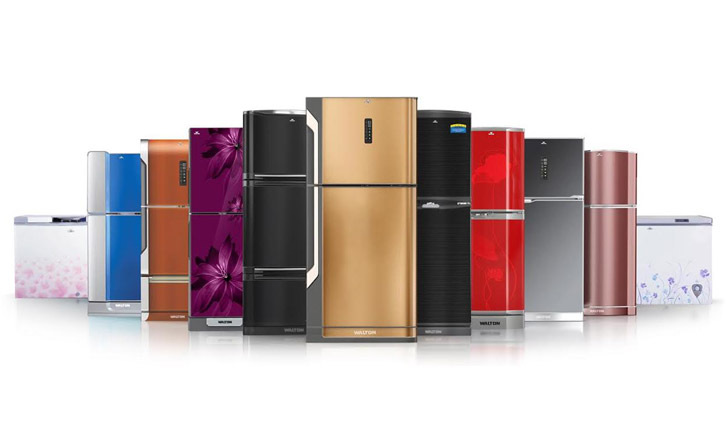
What is the cost of operating a mini refrigerator?
The majority of small fridges in the US have a monthly electricity cost between $2.5 and $6.5, or $30 to $80 annually. The real cost of running your small fridge is influenced by local electricity pricing and energy efficiency.
For instance, power rates differ throughout states according to information from the US Energy Information Administration as of March 2023. For example, Wyoming charges about 10.6 cents per kWh, whereas Connecticut charges 33.2 cents per kWh.
To determine how much it will cost to operate your mini-fridge, multiply its energy usage by the local cost per kWh:
Monthly cost = Monthly Energy Consumption x Cost per kWh
Annual cost = Annual Energy Consumption x cost per kWh
For example, if your mini fridge uses 15 kWh of energy each month and the cost of electricity in your area is $0.2 per kWh, the cost to run the mini fridge each month would be 15 kWh x $0.2/kWh which is $3.
Calculating the Power Usage of a Mini Fridge
Given the rising cost of power, you might be keen to know how much acquiring a compact refrigerator will raise the annual electricity use of your home. It’s good that there is a simple way to determine this. It would be best to ascertain the wattage, or how many watts, that mini-fridges require to function to compute how much electricity they consume.
Locate the volts and amps of your mini fridge on the sticker inside the refrigerator if you can’t locate the information on the device or the handbook. To get the machine’s wattage, multiply these figures.
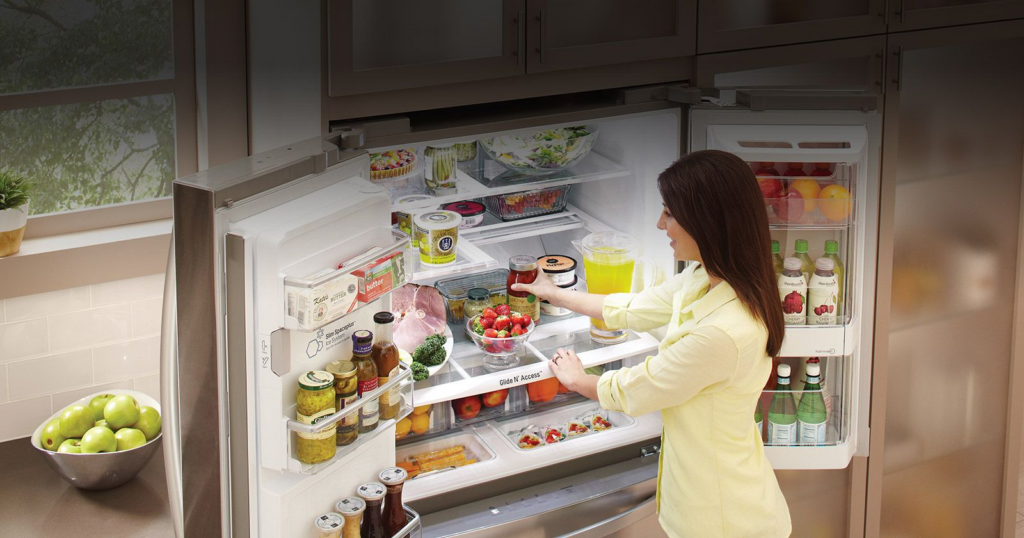
You can calculate your mini fridge’s power consumption once you know its wattage. This is how to accomplish it.
Let us look at the example and steps associated with it to understand better. Let’s say the mini refrigerator’s wattage is 96, and the electricity rate in your area is $0.2 per kilowatt-hour.
Step 1 – The mini fridge’s operating wattage should be multiplied by 24, the number of hours it runs in a day.
96 watts x 24 hours = 2,304 watt hours (Wh)
Step 2 – Convert the number from watts to kilowatts, and divide it by 1,000.
2,304 ÷ 1,000 = 2.304 kilowatt hours (kWh)
Step 3 – Now look at your recent electricity bill to determine how much you have to pay per kilowatt hour in your area.
In this case – 0.2 per kWh
Step 4 – To get how much operating your small fridge will cost per day, multiply the kWh by the kWh rate.
2.304 kWh x $0.2 per kWh = $0.4608 per day
Step 5 – For the monthly energy expenditures of your mini fridge, multiply the daily costs by 30.
0.4608 x 30 = $13.824 per month
Step 6 – Multiply the monthly expenditures by 12 to get the annual energy use.
13.824 x 12 = $165.88 a year
FAQs
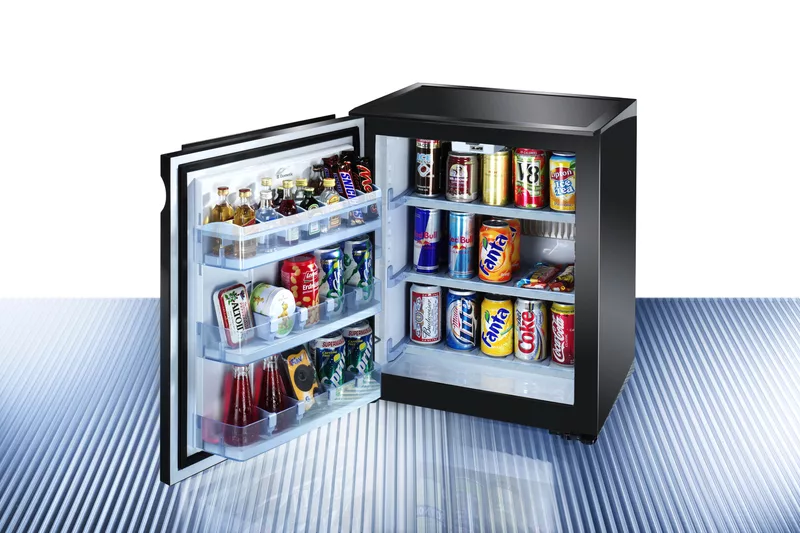
Q: Are small refrigerators energy-efficient?
Compared to larger residential and RV fridges, small fridges tend to be more energy-efficient. On average, mini-fridges use around 3 to 4 times less energy as compared to full-size refrigerators on a daily basis. However, mini-fridges could be slightly less energy-efficient than full-size ones when comparing efficiency based on energy use per cubic foot.
Q: What is the cost of operating a mini refrigerator?
The cost of operating a mini fridge depends on the local electricity prices and the appliance’s energy efficiency. Typically mini-fridges could charge a monthly electricity bill between $2.50 and $6.50, which sums around $30 to $80 yearly. To determine the cost, multiply the monthly energy consumption by the local cost per kWh.
Final Thoughts
You now know everything there is to know about how much electricity a mini fridge consumes. We covered everything from power usage to energy consumption and even the cost of operating these compact refrigerators. It’s important to consider factors like size, insulation, thermostat settings, and door openings when trying to minimize energy consumption.
Understanding how much electricity a mini fridge uses can enable you to use it wisely and make plans for it, whether you’re using one at your office, dorm, or as an extra refrigerator at home.
With this knowledge in hand, feel free to make use of your compact fridge’s convenience while monitoring your energy use. Let’s toast to keeping things cool without going over budget!

